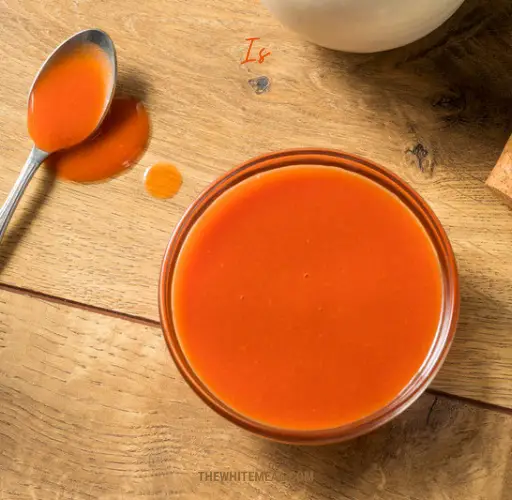If you’re thinking Fermented Sriracha sauce is something that can only be made at commercial plants, then you’re wrong.
You can actually make your own fermented sriracha sauce at home and you bet it’s quite simple!
In this article, we will show you exactly how to make your own fermented sriracha sauce at home so you don’t have to purchase those crap bottles of store bought sriracha sauce filled with unnecessary additives and preservatives.
We will provide you with a step-by-step guide, as well as some tips and tricks to perfect the process.

Are All Sriracha Fermented?
Are you one of those that believe that all Sriracha sauces undergo fermentation? Well, contrary to common opinion, not all Sriracha sauces are fermented.
Fermentation is a process utilized by several brands, with Huy Fong’s being a notable example.
The technique involves leaving the pepper puree to interact with bacteria and yeast, which causes the sugars in the peppers to break down and create complex flavors and depth.
Furthermore, fermentation can extend the shelf-life of these sauces significantly – be it in your fridge or pantry.
Another bonus of fermented Sriracha is its probiotic benefits.
The living cultures present in fermented foods help improve gut health and boost your immune system.
That being said, some brands skip the fermentation step altogether during production.
They may opt for other methods to achieve a similar flavor profile or preserve their products. Popular example is the Tabasco Sriracha which relies on the inclusion of Tabasco Pepper Sauce (which is a fermented product) to achieve a complex taste in the sriracha.
How To Make Fermented Sriracha (Recipe)
Fermented Sriracha Recipe

Here's a straightforward recipe to get you started with fermented sriracha sauce.
Ingredients
- 1 lb Fresno Chiles Pepper
- 6-7 garlic cloves, peeled
- 1/2 tbsp of salt
- 1 Tbsp White Sugar
- 3 tbsp rice vinegar
Instructions
- Begin by preparing your peppers. Remove the stems, and if you’re not a fan of too much heat, some or all of the seeds as well. In a blender, combine the peppers with garlic, salt, and sugar.
- Blend these ingredients until most liquids are extracted but don’t aim for an entirely smooth consistency — leaving some rough patches will add texture and depth to the sauce.
- Transfer this pepper mixture into a sterilized jar, ensuring everything is submerged in its liquid. Loosely cover with the lid and let it sit on your kitchen counter (away from direct sunlight) for about seven days. During this resting period, remember to give it a good stir at least once per day.
- You’ll notice that fermentation begins when bubbles start forming in your mixture — this might take at least 24 hours or so. If you desire less intense flavors, feel free to shorten the fermentation time; however, we recommend allowing it to ferment for at least two days.
- After completion of the fermentation phase, pour your mixture back into your blender—this time adding vinegar—and blitz until smooth. Strain this through a fine sieve into a small saucepan and start warming it on medium-low heat until it reduces and thickens up nicely.
- Remove from heat and allow it cool down before transferring it into sterilized jars or bottles and sealing tightly with screw-top lids or seals.
- Store your homemade fermented Sriracha in the refrigerator where it will be ready to add zest to any dish whenever you need them.
Nutrition Information:
Amount Per Serving: Calories: 7
How Long Will Homemade Fermented Sriracha Last In The Fridge?
We get it, after putting in the hard work and effort, you naturally want to savor your homemade creation as long as possible.
According to the recipe above, expect your homemade fermented Sriracha to last in the fridge for up to 4 weeks after opening.
This time frame may vary depending on the storage conditions and whether you sealed it properly during preparation.
For extended storage life, you can consider sealing the sauce after making it, and then storing it in a cool dark place.
Remember that even though fermentation acts as a natural preservative, it doesn’t make your sauce invulnerable to spoilage.
However long it lasts, always remember: safety first!
Before using your sauce, check for any signs of spoilage such as mold growth, a strange odor, or changes in color or texture.
If anything seems off at all or if you’re in any doubt, it’s best to discard it and whip up a fresh batch.

